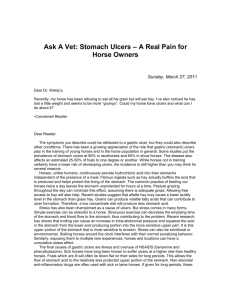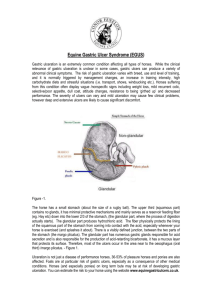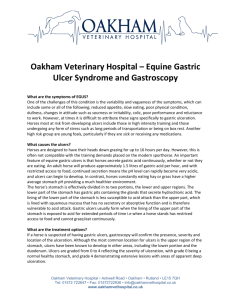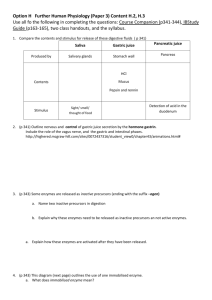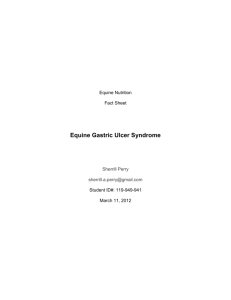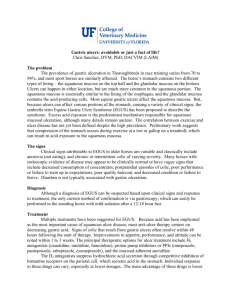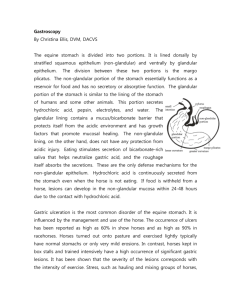A_Whole_Bunch_of_Bellyachin
advertisement
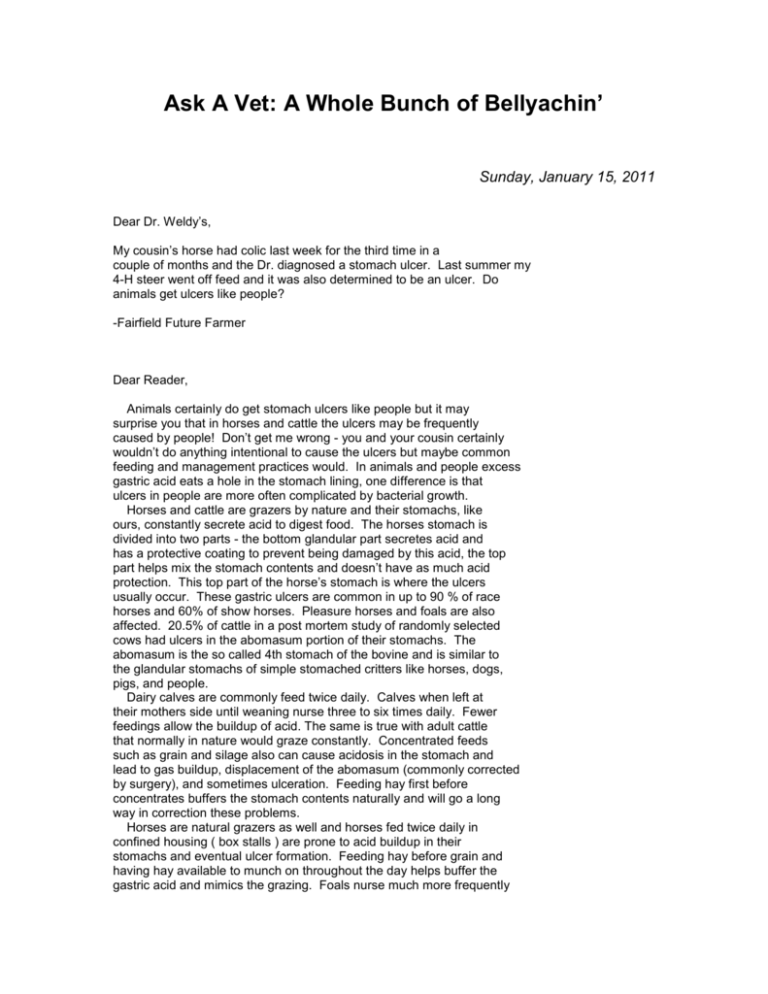
Ask A Vet: A Whole Bunch of Bellyachin’ Sunday, January 15, 2011 Dear Dr. Weldy’s, My cousin’s horse had colic last week for the third time in a couple of months and the Dr. diagnosed a stomach ulcer. Last summer my 4-H steer went off feed and it was also determined to be an ulcer. Do animals get ulcers like people? -Fairfield Future Farmer Dear Reader, Animals certainly do get stomach ulcers like people but it may surprise you that in horses and cattle the ulcers may be frequently caused by people! Don’t get me wrong - you and your cousin certainly wouldn’t do anything intentional to cause the ulcers but maybe common feeding and management practices would. In animals and people excess gastric acid eats a hole in the stomach lining, one difference is that ulcers in people are more often complicated by bacterial growth. Horses and cattle are grazers by nature and their stomachs, like ours, constantly secrete acid to digest food. The horses stomach is divided into two parts - the bottom glandular part secretes acid and has a protective coating to prevent being damaged by this acid, the top part helps mix the stomach contents and doesn’t have as much acid protection. This top part of the horse’s stomach is where the ulcers usually occur. These gastric ulcers are common in up to 90 % of race horses and 60% of show horses. Pleasure horses and foals are also affected. 20.5% of cattle in a post mortem study of randomly selected cows had ulcers in the abomasum portion of their stomachs. The abomasum is the so called 4th stomach of the bovine and is similar to the glandular stomachs of simple stomached critters like horses, dogs, pigs, and people. Dairy calves are commonly feed twice daily. Calves when left at their mothers side until weaning nurse three to six times daily. Fewer feedings allow the buildup of acid. The same is true with adult cattle that normally in nature would graze constantly. Concentrated feeds such as grain and silage also can cause acidosis in the stomach and lead to gas buildup, displacement of the abomasum (commonly corrected by surgery), and sometimes ulceration. Feeding hay first before concentrates buffers the stomach contents naturally and will go a long way in correction these problems. Horses are natural grazers as well and horses fed twice daily in confined housing ( box stalls ) are prone to acid buildup in their stomachs and eventual ulcer formation. Feeding hay before grain and having hay available to munch on throughout the day helps buffer the gastric acid and mimics the grazing. Foals nurse much more frequently than calves and drink smaller amounts more often. Disruption in this schedule is a real setup for gastric ulcers. Stress from intense race and show training has been shown to increase gastric acid formation. Horses stressed by hauling long distances, mixing groups of horses, and certain pain medications are also contributing factors. Treatment and prevention using medication to decrease gastric acid production work well and your veterinarian can help you make the right choice in dealing with these bellyaches. -Dr. Jerry Sellon
